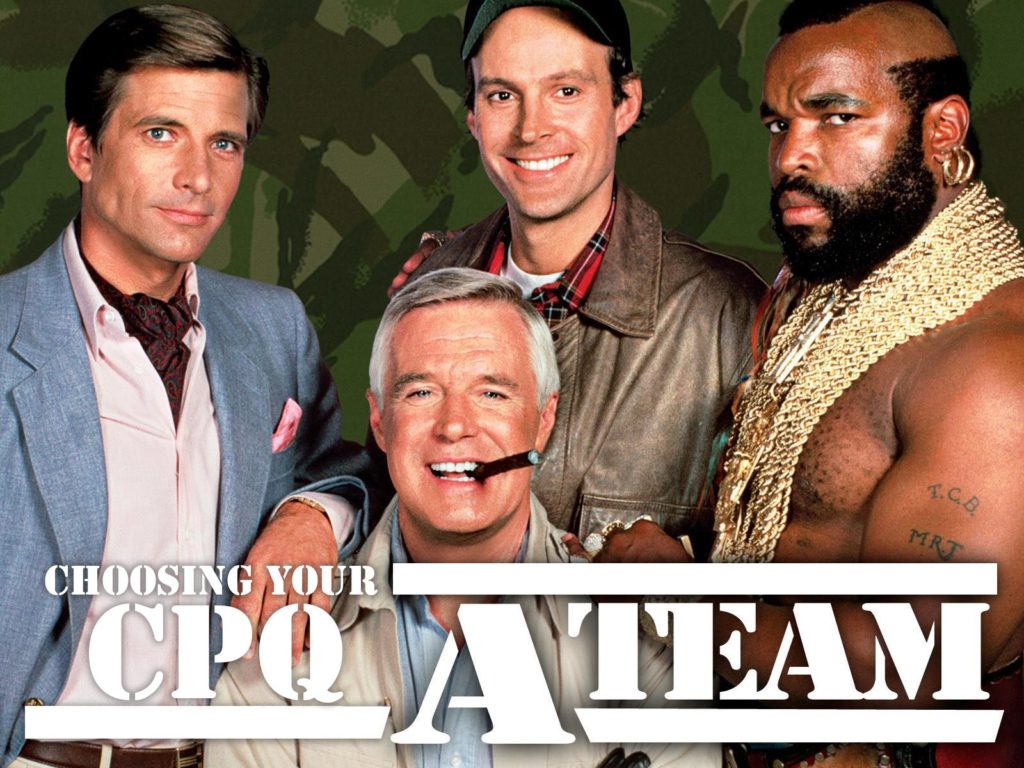Director of Customer Success
We all know that implementing CPQ can be a very daunting process. You’re suddenly responsible for introducing an application that will transform the way your sales team conducts business, and it will completely change the way your company packages products, manages pricing, and shapes go-to-market strategy. If your company has a global footprint, you will also need to identify unique localizations, gap-fit to local requirements, and determine if a global “big bang” or phased rollout is palatable for your business. It’s important to understand that this will be a transformational process for your business and it is imperative to have a game-plan. More importantly, it’s vital that you have a foundation to build from, which starts with having the right people in the room.
Because CPQ touches so many parts of the business, it’s important to keep in mind the potential impacts that this could have on your systems. Some technologies may become outdated or obsolete and others may require integrations to take advantage of the new business inputs from CPQ. Either way, you’ll need a team.

Just like Hanibal, Faceman, Baracus, and Murdock’s unique skills and expertise were required to complete missions, you’ll want a diverse set of people and perspectives on your CPQ team to avoid delays and prevent backtracking to incorporate requirements you didn’t know existed. To make the best use of this new technology and make the implementation as smooth as possible, you’ll want to get the correct people involved early and make sure they have access and updates throughout the project. It is critical to have the right people on-board to answer any questions that you may have along the way.
At a minimum you should have stakeholders from IT, Sales, Product Management, Finance, and sometimes Marketing. Before recruiting your CPQ team, make sure you understand what role each team member will play, what questions they will need to answer, and what source materials they need to bring to the project. Lots of people will have opinions on how to structure CPQ—you’re looking for people with the authority to make decisions so the project can keep moving.
This is the person who gave the green-light on the project in the first place. They probably signed the order form or own the budget paying for CPQ.
You’re going to need people from IT involved in your CPQ project since they will be responsible for making sure it plays nice with your other business systems and they should be involved with implementation along the way. Titles typically include IT Director/Manager, Salesforce Architect, and Salesforce Administrator.
As the primary end users of CPQ, the sales team will provide invaluable input and feedback on how the user experience should work. After all, they’re the ones who are following the business processes you’re trying to optimize with CPQ. You’ll want a few individual contributors to provide feedback, especially early on during requirements gathering so you can nail the user experience. You’ll also want a sales manager involved to provide context on how CPQ needs to work for the team. Lastly, when it comes time to roll out CPQ, these folks will help advocate for CPQ with their peers.
Sales Operations and Sales Enablement may be part of the same team or be their own departments; either way these teams are critical to ensuring CPQ adoption.
You can’t have CPQ without products to configure, price, and quote. Everyone will have opinions on how products should be sold, but ultimately it’s your Product Management team that figures out the most profitable way to bring products to market.
Once you close a deal, Finance takes over to bill the customer, collect payment, and report on revenue. The last thing you want is to allow sales reps to send a quote that you can’t close because you missed a key data point. You also want someone in Finance involved as they are responsible for keeping your company compliant with laws and regulations governing financial reporting.
Since quotes are customer-facing documents you want to make sure they’re making the best impression. That’s where your marketing team comes in. Depending on the company, marketing may also be responsible for running promotions that will impact pricing in CPQ.
Once you’ve assembled your CPQ dream team, the next step is to have a kickoff meeting where you reiterate why everyone was chosen for the team, their areas of responsibility during the project, and what is important to each member of the team. Yes, I really mean before you do anything else. Do not start requirements gathering. Do not collect any source material. Do not pass go. Do not collect $200.
There will be many debates throughout your CPQ implementation. After all, this new system needs to work for a variety of users across departments. Defining a structure for how decisions will be made and how debates will be settled at the start of the project will allow for equal input from all stakeholders while preventing stalemates. In general, each team member should have the final say in the requirements for their area of functional responsibility, and IT should be responsible for finding the most efficient way to configure CPQ to meet each business unit’s requirements. For example, the Sales team may want to have fewer required fields, but Finance needs certain data points for billing or regulatory requirements. IT may propose a solution that collects the necessary data points at a different stage of the process to simplify the experience for Sales and still meet Finance’s needs.
Your CPQ team sets the foundation for long term success with CPQ. For more information on planning, implementing, and maintaining CPQ, watch our webinar on Salesforce CPQ Gotchas and Best Practices.